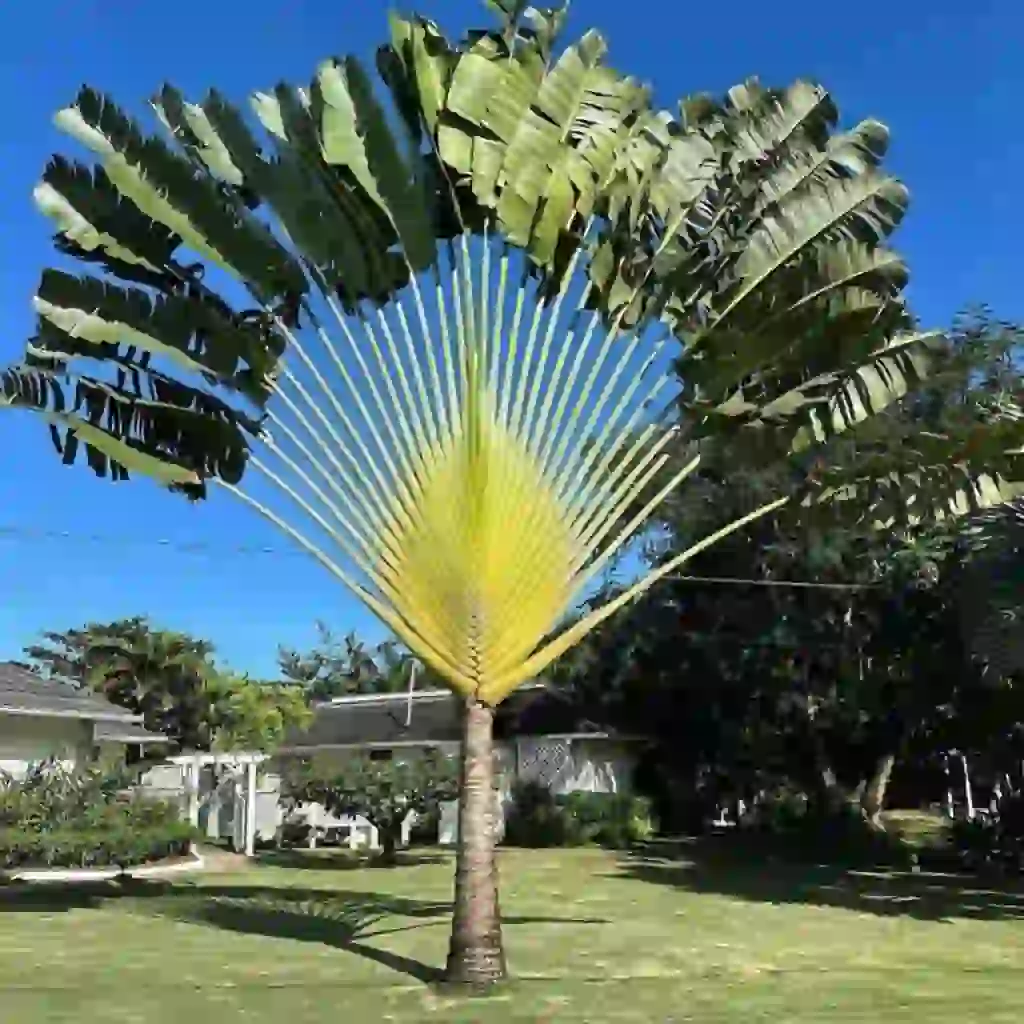How to Care for a Travelers Palm: A Guide to Growing This Unique Plant

Introduction
The traveler’s palm (Ravenala madagascariensis) is a striking tropical plant known for its fan-like leaves that resemble an open book. Native to Madagascar, this unique plant has become a popular choice for gardens and indoor spaces worldwide. While it may seem exotic, caring for a traveler’s palm is relatively straightforward with the right approach.
Understanding the Traveler’s Palm
Before diving into care instructions, let’s familiarize ourselves with the traveler’s palm. This plant is a member of the Strelitziaceae family, which also includes the bird of paradise flower. It is a large, fast-growing plant that can reach heights of up to 30 feet (9 meters). The fan-like leaves are arranged in two rows, creating a distinct V-shape.

Ideal Growing Conditions
- Sunlight: Traveler’s palms thrive in bright, indirect sunlight. While they can tolerate some shade, they will grow more vigorously and produce larger leaves with ample sunlight. Avoid exposing them to intense, direct sunlight for extended periods, as this can scorch the leaves.
- Temperature: These plants prefer warm temperatures between 65°F (18°C) and 85°F (29°C). They can tolerate cooler temperatures, but avoid frost as it can damage the plant.
- Humidity: Traveler’s palms require high humidity levels. Ideally, aim for a humidity level of 60-70%. If your home’s humidity is low, you can increase it by misting the plant regularly, using a humidifier, or placing the pot on a pebble tray filled with water.
- Soil: A well-draining potting mix is essential for the health of a traveler’s palm. A blend of potting soil, perlite, and coco coir works well. Avoid using heavy soils that retain too much moisture, as this can lead to root rot.
- Watering: Water your traveler’s palm regularly, keeping the soil consistently moist but not soggy. Allow the top inch of soil to dry out slightly between waterings. Avoid overwatering, as this can lead to root rot.
Planting and Repotting
- Planting: If planting outdoors, choose a location with ample sunlight and well-draining soil. Dig a hole that is slightly larger than the root ball and carefully place the plant in the hole. Fill in the surrounding gaps with soil and water thoroughly.
- Repotting: Repot your traveler’s palm every two to three years to provide fresh nutrients and space for root growth. Choose a pot that is slightly larger than the current one. Carefully remove the plant from its pot and gently loosen the roots. Place the plant in the new pot and fill in the gaps with fresh potting mix. Water thoroughly.

Caring for Leaves and Flowers
- Leaves: Regularly clean the large leaves of your traveler’s palm to remove dust and debris. Use a damp cloth or sponge to gently wipe the leaves. Avoid using harsh chemicals that can damage the leaves.
- Flowers: Traveler’s palms produce large, white flowers that bloom in clusters. While the flowers are not as showy as those of the bird of paradise, they are still a beautiful addition to the plant. Remove spent flowers to encourage new growth.
Common Problems and Solutions
- Yellowing leaves: This could be a sign of overwatering or underwatering. Adjust your watering schedule accordingly.
- Brown leaf tips: This could indicate low humidity. Increase the humidity around the plant using the methods mentioned earlier.
- Pests: Traveler’s palms are susceptible to mealybugs and scale insects. If you notice pests, treat them with insecticidal soap or neem oil.
Conclusion
The traveler’s palm is a stunning and rewarding plant to grow. By providing the right growing conditions and care, you can enjoy its beauty for years to come. With its unique appearance and relatively easy care requirements, the traveler’s palm is a wonderful addition to any tropical garden or indoor space.

FAQs
- How often should I fertilize my traveler’s palm? Fertilize your traveler’s palm once a month during the growing season (spring and summer) with a balanced liquid fertilizer diluted to half strength.
- Can I grow a traveler’s palm indoors? Yes, you can grow a traveler’s palm indoors. However, it will require bright, indirect sunlight and high humidity levels.
- How long does it take for a traveler’s palm to flower? Traveler’s palms typically take several years to flower, depending on growing conditions.
- Can I propagate a traveler’s palm from seed? Yes, you can propagate a traveler’s palm from seed. However, it is a slow process, and germination rates can be low.
- Are traveler’s palms poisonous to pets? No, traveler’s palms are not poisonous to pets.










